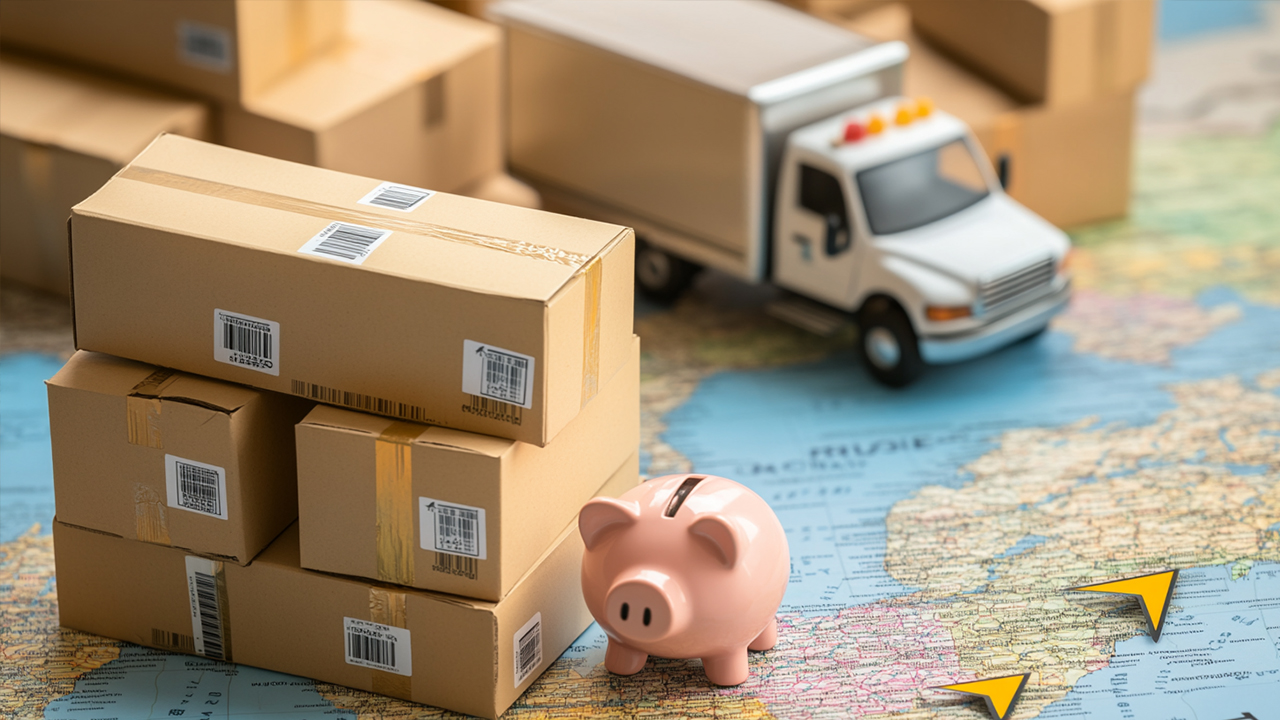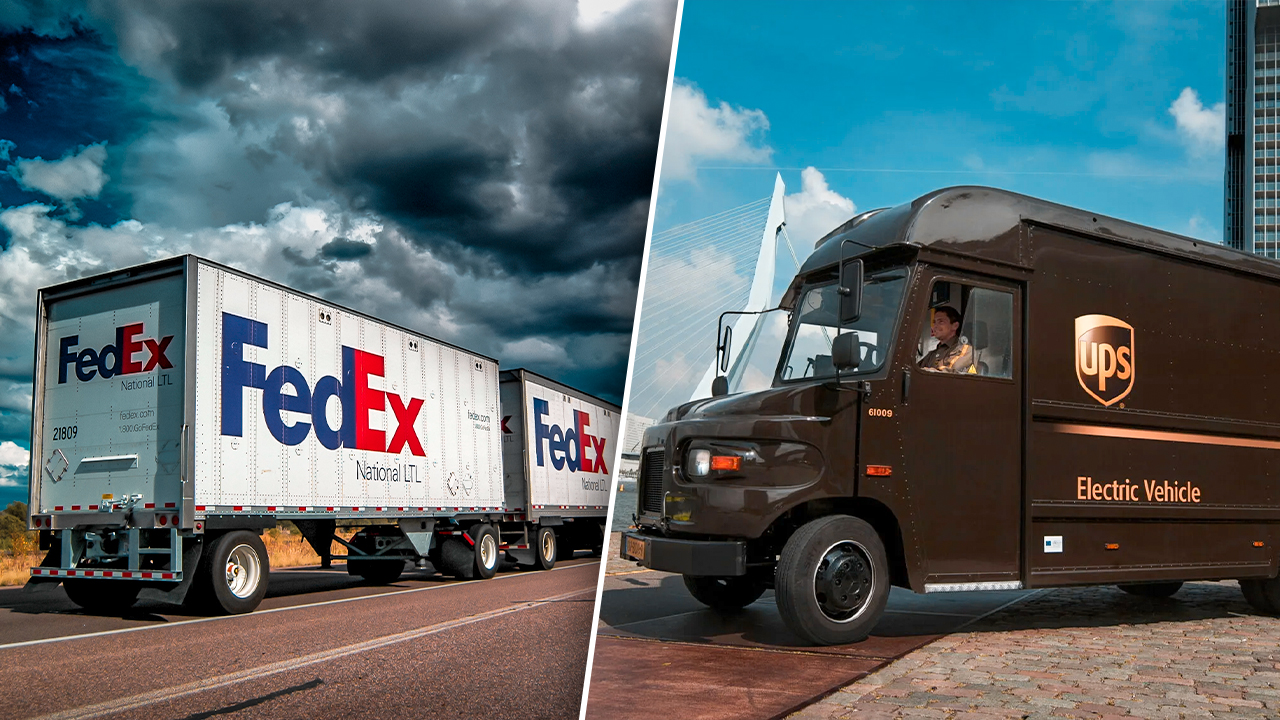Eco-Friendly Shipping_Tracking Your Carbon Footprint
What Are Some Tips for Reducing Carbon Footprint in Shipping?
- Use Sustainable Packaging Materials
- Optimize Shipping Routes
- Consolidate Shipments
- Utilize Alternative Transportation Methods
What Are the Benefits of Reducing Carbon Footprint in Shipping?
- Cost Savings
- Positive Brand Image
- Environmental Impact
As the world increasingly prioritizes sustainability, **sustainable shipping** has emerged as a vital practice for businesses and consumers alike.
Understanding and tracking your **carbon footprint** is essential for making informed shipping decisions that benefit the planet.
This article explores how modern tracking services help monitor **environmental impact** and offer practical solutions for reducing it.
From **eco-friendly packaging** to optimizing routes, discover actionable tips and the benefits of adopting eco-friendly shipping strategies in your business.
1. What is Eco-Friendly Shipping?
Eco-friendly shipping refers to the practices and processes involved in transporting goods in a manner that minimizes environmental impact and enhances sustainability. This includes utilizing sustainable shipping solutions that reduce the carbon footprint, employing eco-friendly packaging made from biodegradable and recycled materials, and optimizing shipping logistics to ensure minimal waste and emissions. Companies like **Amazon** and **UPS** are increasingly adopting these strategies to cater to **eco-conscious consumers** who prioritize environmental responsibility.2. Why is Tracking Your Carbon Footprint Important for Eco-Friendly Shipping?
Tracking your **carbon footprint** is crucial for eco-friendly shipping as it allows businesses to measure and manage the **environmental impact** of their shipping practices effectively. By understanding shipping emissions, companies can identify areas for improvement and implement strategies that contribute to carbon neutral shipping. This data is invaluable for making informed decisions about packaging materials, optimizing **optimized routes**, and reducing **delivery emissions**, ultimately leading to a more sustainable operation that aligns with consumer expectations.3. How Can Modern Tracking Services Help Monitor and Reduce Environmental Impact of Shipments?
Modern tracking services play a pivotal role in monitoring and reducing the **environmental impact** of shipments by providing real-time data and analytics that inform **sustainable shipping** practices. These **innovative solutions** help businesses identify **optimized routes** and **shipping logistics**, thereby minimizing fuel consumption and carbon emissions associated with their deliveries. Furthermore, tracking services can enhance consumer education by offering insights into the environmental footprint of their purchases, making it easier for companies to adopt eco-friendly practices.What are the Features of Modern Tracking Services?
Modern tracking services come equipped with various features designed to enhance shipping logistics and environmental accountability, including real-time tracking, predictive analytics, and smart packaging solutions. These tools not only allow businesses to monitor their shipments effectively but also to optimize delivery routes to decrease carbon emissions and minimize packaging waste. Companies like **FedEx** and **UPS** leverage these features to ensure that their shipping strategies align with **sustainable practices** and consumer expectations.The integration of smart packaging technologies has transformed the way shipments are monitored and secured. This innovative approach not only enhances packaging efficiency but also supports sustainability by utilizing materials that reduce waste. Real-time updates keep consumers informed and engaged, fostering a culture of transparency about their shipment's environmental impact.
- Sustainability reporting tools provide valuable insights that give the power to companies to make data-driven decisions regarding their shipping practices.
- This aligns perfectly with recent **regulatory changes** that push businesses towards greener operations, emphasizing the importance of **eco-friendly logistics**.
The rise of **consumer education** around sustainable practices further encourages businesses to adopt these advanced tracking services, ultimately leading to a more **environmentally responsible shipping** industry.
How Do Modern Tracking Services Calculate Carbon Footprint?
Modern tracking services calculate the **carbon footprint** of shipments by analyzing various factors, including **shipping emissions**, **route optimization**, and the use of **renewable energy** sources in transportation. These services often utilize sophisticated algorithms that take into account the type of packaging materials used, the weight of the shipment, and the distance traveled, providing businesses with a comprehensive overview of their environmental impact. This data is vital for companies committed to reducing their **carbon footprint** and adopting **sustainable shipping strategies**.By employing a range of methodologies, these services integrate crucial data inputs from multiple sources. For instance, tracking software collects information on packaging lifecycle that assesses the environmental effects of materials from production to disposal. They utilize sensors and GPS technology to monitor real-time emissions during transit and calculate **carbon offsets** that can mitigate these impacts. This aggregated data helps businesses make informed decisions about:
- Optimizing routes to shorten travel distances
- Choosing sustainable packaging options
- Investing in carbon offset programs
As a result, companies not only enhance their sustainability practices but also align with consumers' increasing demand for **eco-friendly products**.
How Do Modern Tracking Services Help Reduce Carbon Footprint?
Modern tracking services assist in reducing carbon footprints by enabling effective delivery optimization and promoting eco-friendly practices throughout the shipping process. By providing insights into **shipping emissions** and allowing for the **consolidation of orders**, these services help businesses minimize their environmental impact while simultaneously improving efficiency. Implementing these solutions not only aligns with sustainable business practices but also caters to the growing demand for environmentally responsible shipping among consumers.As the landscape of global commerce evolves, tracking services play a crucial role by adopting various strategies that enhance sustainability. Foremost among these strategies are:
- Route Optimization: This technique significantly reduces fuel consumption by determining the most efficient delivery paths, thus lessening the overall carbon footprint of transportation.
- Order Consolidation: By combining multiple orders into a single shipment, businesses can lower the number of trips needed for deliveries, effectively cutting emissions and saving costs.
- Eco-friendly Packaging: Utilizing sustainable materials that are recyclable or biodegradable not only minimizes waste but also appeals to environmentally conscious consumers.
These methods contribute to a growing trend where **sustainable shipping trends** are becoming a vital part of consumer behavior, encouraging businesses to innovate continuously in their shipping practices.
4. What Are Some Tips for Reducing Carbon Footprint in Shipping?
Reducing your **carbon footprint** in shipping is not only beneficial for the environment but can also lead to significant **cost savings** and improved brand image. By adopting **sustainable shipping practices** such as using **eco-friendly packaging materials**, optimizing **delivery routes**, and consolidating shipments, businesses can effectively lessen their environmental impact. Furthermore, employing strategies such as utilizing biodegradable materials and implementing smart packaging solutions can make a substantial difference in achieving sustainability goals.Use Sustainable Packaging Materials
Using **sustainable packaging materials** is essential for reducing the environmental impact of shipping and can significantly contribute to a reduced **carbon footprint**. By opting for **biodegradable materials**, **recycled materials**, and eco-friendly **packaging options**, businesses can minimize **packaging waste** and align themselves with the principles of a **circular economy**. This shift not only addresses **plastic pollution** but also meets the increasing demand from **eco-conscious consumers** for responsible packaging solutions.In today's market, there are various types of sustainable packaging materials that not only focus on functionality but also emphasize environmental responsibility. Businesses can choose from **lightweight packaging**:
- Biodegradable Materials: These materials break down naturally, reducing landfill waste.
- Recycled Content: Utilizing packaging made from recycled resources conserves raw materials and energy.
- Plant-Based Plastics: Derived from **renewable resources**, these **Plant-based plastics** offer a viable alternative to conventional options.
Integrating sustainable packaging design not only enhances brand image but also educates consumers on the lifecycle of these materials, promoting a deeper understanding of their choices.
Embracing sustainable practices alongside effective consumer education can certainly lead to stronger market positioning and overall ecological improvement.
Optimize Shipping Routes
Optimizing **shipping routes** is a critical step in reducing **carbon footprints** and enhancing the efficiency of **delivery operations**.
By employing innovative technologies and strategic methodologies, companies can refine their logistics frameworks to effectively decrease emissions during transport. Modern route optimization software tools allow for real-time data analysis, enabling businesses to assess factors such as traffic patterns, weather conditions, and vehicle loads. Through the integration of GPS tracking and machine learning algorithms, these tools facilitate decisions that lead to **green shipping**:
- Reduced fuel consumption
- Faster delivery times
- Lower operational costs
The adoption of optimized routes helps enhance customer satisfaction by ensuring timely deliveries. With the world increasingly focused on sustainability, utilizing such strategies positions companies as leaders in eco-friendly shipping practices.
Consolidate Shipments
Consolidating shipments is an effective strategy for reducing the carbon footprint associated with shipping activities by maximizing efficiency and minimizing waste. By grouping orders together, businesses can reduce the number of trips needed for delivery, thereby decreasing shipping emissions and enhancing their overall environmental impact. This approach not only leads to cost savings but also aligns with sustainable shipping practices and consumer expectations for responsible operations.Considering the benefits of this method, it's essential to implement best practices for effective consolidation. For example, utilizing software to analyze and forecast demand can help businesses determine optimal shipping schedules.
- Streamlining inventory management ensures that products are readily available for bundling.
- Collaborating with suppliers can facilitate combined shipments, further reducing environmental impact.
- Employing smart packaging solutions minimizes wasted space and material, enhancing the efficiency of the entire process.
Ultimately, adopting these strategies for shipment consolidation fosters a proactive approach to environmental responsibility, showcasing a commitment to sustainability in shipping solutions.
Utilize Alternative Transportation Methods for Last-Mile Delivery
Utilizing alternative transportation methods can significantly contribute to reducing the carbon footprint of shipping operations, aligning with eco-friendly practices and sustainable business models. By exploring options such as electric vehicles, bicycles, or even drones for last-mile delivery, businesses can enhance their shipping logistics while minimizing emissions and reliance on fossil fuels. This transition not only caters to environmentally conscious consumers but also supports the broader goals of reducing environmental impact across the shipping industry.To further this goal of sustainability, companies should consider integrating various renewable energy sources into their logistics strategies. This not only includes adopting electric fleets powered by solar or wind energy but also exploring:
- Innovative routes that minimize distance and optimize delivery times.
- Collaborations with local businesses that utilize sustainable practices.
- Investment in green packaging materials to reduce waste.
By embracing these approaches, organizations can enhance their operational efficiency while promoting environmental awareness. The shift towards sustainable shipping trends not only translates to cost savings but also positions businesses as leaders in the movement towards a greener future.
5. What Are the Benefits of Reducing Carbon Footprint in Shipping with Innovative Design?
Reducing the carbon footprint in shipping offers numerous benefits including cost savings, a positive brand image, and significant reductions in overall environmental impact. As businesses adopt sustainable practices and demonstrate their commitment to eco-friendly shipping, they can attract eco-conscious consumers who prioritize companies that prioritize environmental responsibility. Moreover, implementing efficient shipping solutions can lead to lower shipping costs, better customer satisfaction, and improved operational efficiency.Cost Savings
Implementing strategies to reduce the carbon footprint in shipping can lead to significant cost savings through improved shipping logistics and packaging efficiency. By optimizing delivery routes, consolidating shipments, and utilizing eco-friendly packaging materials, businesses can decrease operational costs associated with fuel consumption and waste management. This financial benefit makes sustainability not only environmentally responsible but also economically viable for companies.In fact, numerous organizations have showcased the effectiveness of these measures. For example, a leading online retailer recently reported a 15% reduction in shipping costs after adopting a strategy focused on environmental responsibility. This involved calculating and adjusting their delivery routes to minimize travel distances, resulting in less fuel usage. Incorporating lighter packaging reduced material expenses and enhanced cargo capacity.
- Another well-known logistics firm also noted significant savings through active monitoring of their fleet's carbon emissions, allowing for informed adjustments in their operations.
- Consumers are increasingly favoring businesses that prioritize sustainability, creating a positive feedback loop where eco-friendly measures contribute to brand loyalty and increased sales.
By adopting such practices, companies not only lower their operational costs but also align themselves with evolving consumer habits that increasingly value environmental stewardship.
Positive Brand Image through Sustainable Branding
A commitment to reducing carbon footprints in shipping can significantly enhance a company's brand image by portraying it as a leader in sustainable business practices. As eco-conscious consumers increasingly gravitate towards businesses that prioritize environmental impact, companies that adopt eco-friendly shipping solutions can set themselves apart from competitors and foster strong customer loyalty. This positive perception not only boosts brand reputation but also drives long-term success in the marketplace.By integrating sustainable practices into their logistics, brands can also engage in consumer education, informing their audience about the benefits of eco-friendly shipping.
- For instance, brands like Patagonia have successfully utilized their commitment to sustainability to increase customer trust and loyalty.
- Similarly, IKEA has invested in renewable energy solutions for transporting goods, minimizing its environmental impact.
- These efforts not only resonate with consumers but also reinforce the idea that responsible business practices contribute to a healthier planet.
Ultimately, the impact of sustainable branding is profound: it cultivates a community of environmentally aware consumers who are eager to support a brand that aligns with their values.
Environmental Impact of Sustainable Shipping Practices
Reducing the carbon footprint in shipping has a profound impact on the environment, contributing to less packaging waste and lower greenhouse gas emissions.
By taking significant steps towards sustainability, the shipping industry can lead the charge in fostering a healthier planet, addressing pressing issues like plastic pollution and its detrimental effects on marine wildlife.
By adopting eco-friendly practices and promoting sustainable shipping solutions, businesses can play a critical role in mitigating climate change and reducing their overall environmental impact. This effort not only benefits the planet but also aligns with the growing demand for responsible corporate behavior among consumers.
Reducing plastic pollution is crucial; as shipping companies shift towards biodegradable materials and packaging innovations, they can dramatically decrease the volume of waste ending up in landfills. Here are some broader implications:
- Wildlife Preservation: The reduction of shipping-related waste leads to fewer marine animals suffering from plastic ingestion or entanglement.
- Landfill Impact: With a focus on the circular economy, less non-biodegradable waste means reduced pressure on landfill capacity.
- Pollution Levels: Sustainable shipping practices contribute to lower emissions, significantly improving air quality and reducing harmful greenhouse gases.
These interconnected benefits underscore the importance of reshaping shipping practices for a more sustainable future.







